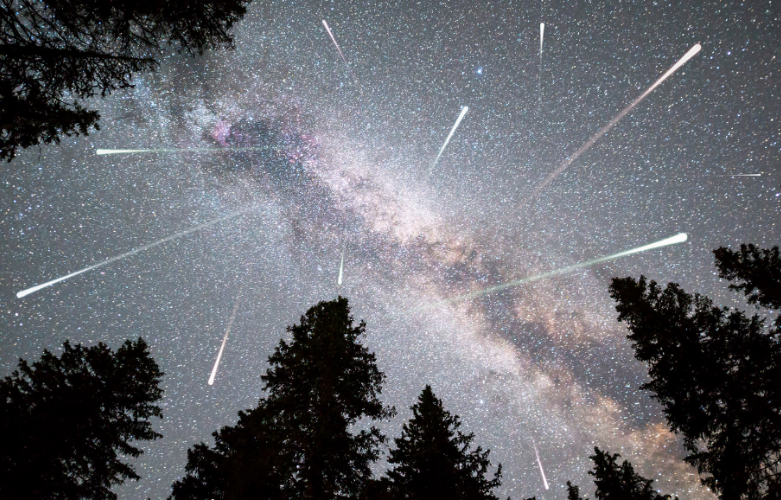|
|
TODAY.AZ / Weird / Interesting
Orionid meteor shower to be observed in Baku
02 October 2024 [14:35] - TODAY.AZ

From October 2 to November 7, the Orionid meteor shower will be observed in Baku, Azernews reports, citing Azertag. The number of meteors will peak on October 21.
According to Baku State University's Astrophysics Department, this meteor shower is called Orionids because its source is in the Orion constellation.
At its peak, up to 20 meteors can be seen per hour. In Baku, the shower can be observed from 22:00 to 06:27, until dawn.
This is the second meteor shower of the month. The Draconid meteor shower will be observed from October 6 to 10, peaking on October 8.
The Orionid meteor shower is the second meteor shower created by Halley's comet. It takes Halley's comet approximately 76 years to complete one orbit around the Sun. It will be visible from Earth again in 2061.
Sometimes meteors fall in groups. The meteors that make up a meteor shower appear to originate from the same point in the sky to observers on Earth because they move along parallel trajectories at the same speed.
This point is referred to as the radiant. Traditionally, meteor showers are named after the constellation in which the radiant is located.
The Orionids are a stunning meteor shower that peaks in mid-October each year.
These meteors are bright and move very quickly, travelling at about 148,000 mph (66 km/s) as they enter Earth's atmosphere.
Because they are so fast, they can leave glowing trails behind them that can last for seconds or even minutes. Sometimes, they can explode into bright flashes of light, which are called fireballs.
The Orionids also occur near some of the brightest stars in the night sky, creating a beautiful setting for watching these impressive meteors.
URL: http://www.today.az/news/interesting/253603.html
 Print version
Print version
Connect with us. Get latest news and updates.
See Also
- 19 February 2025 [22:20]
Visa and Mastercard can return to Russia, but with restrictions - 05 February 2025 [19:41]
Japan plans to negotiate with Trump to increase LNG imports from United States - 23 January 2025 [23:20]
Dubai once again named cleanest city in the world - 06 December 2024 [22:20]
Are scented candles harmful to health? - 23 November 2024 [14:11]
Magnitude 4.5 earthquake hits Azerbaijan's Lachin - 20 November 2024 [23:30]
Launch vehicle with prototype of Starship made its sixth test flight - 27 October 2024 [09:00]
Fuel prices expected to rise in Sweden - 24 October 2024 [19:14]
Turkiye strikes terror targets in Iraq and Syria - 23 October 2024 [23:46]
Kazakhstan supplied almost entire volume of oil planned for 2024 to Germany in 9 months - 23 October 2024 [22:17]
Taiwan reported passage of Chinese Navy aircraft carrier near island
Most Popular
 Important project for Baku receive approval of EU: East-West energy chain close
Important project for Baku receive approval of EU: East-West energy chain close
 Minorities Rights Bill 2025 passed: Pakistan creates autonomous watchdog for religious minorities
Minorities Rights Bill 2025 passed: Pakistan creates autonomous watchdog for religious minorities
 Parallel worlds of European Union and South Caucasus
Parallel worlds of European Union and South Caucasus
 Kocharyan’s reckless rhetoric exposes real enemy of Armenia’s future
Kocharyan’s reckless rhetoric exposes real enemy of Armenia’s future
 Georgia allows one-time free transit of Azerbaijani oil products to Armenia
Georgia allows one-time free transit of Azerbaijani oil products to Armenia
 Speaker Gafarova highlights Parliament’s role in shaping future of Azerbaijani language
Speaker Gafarova highlights Parliament’s role in shaping future of Azerbaijani language
 OIC Cultural Festival commences in Baku
OIC Cultural Festival commences in Baku
